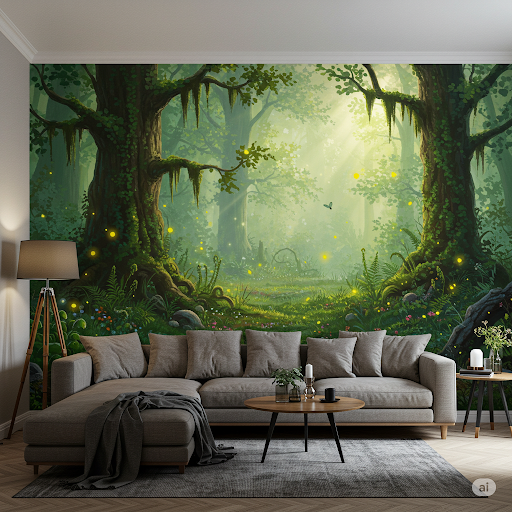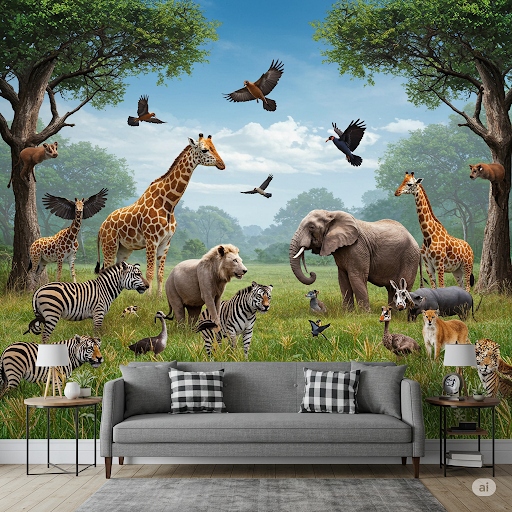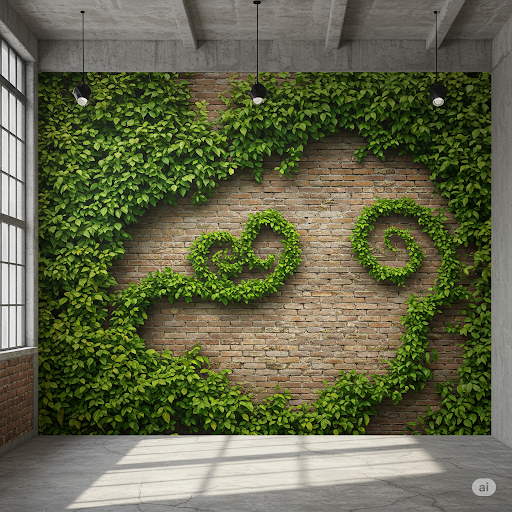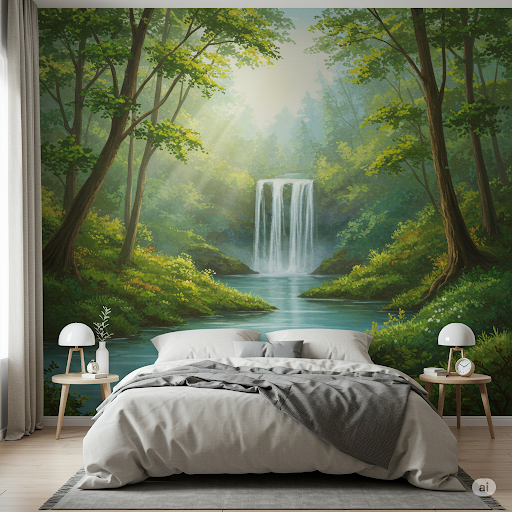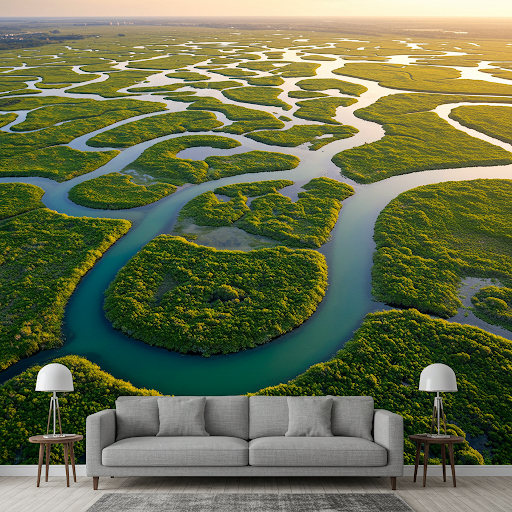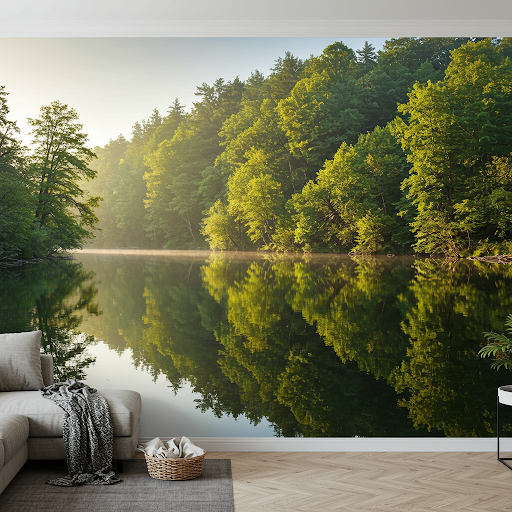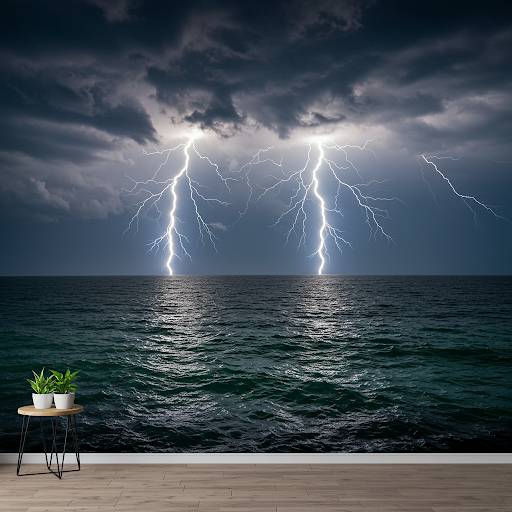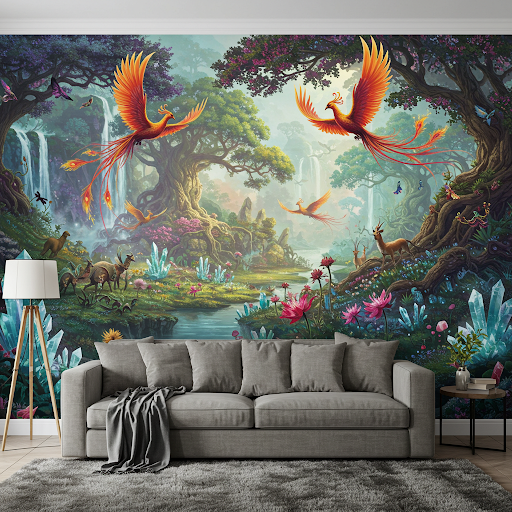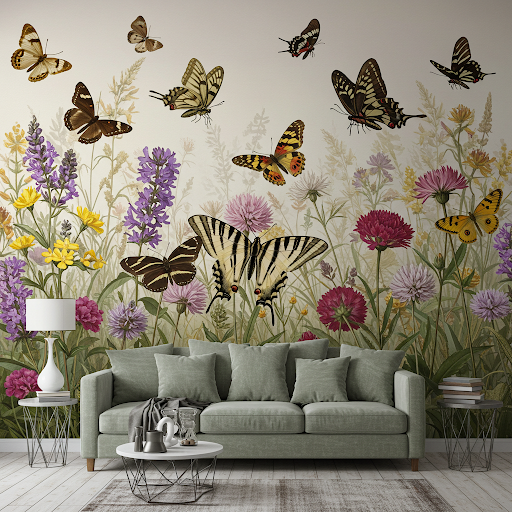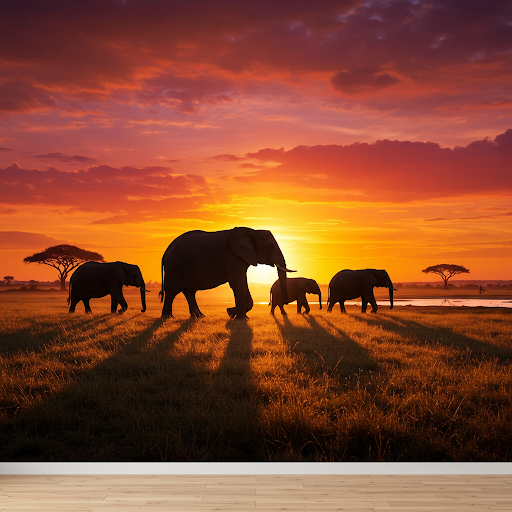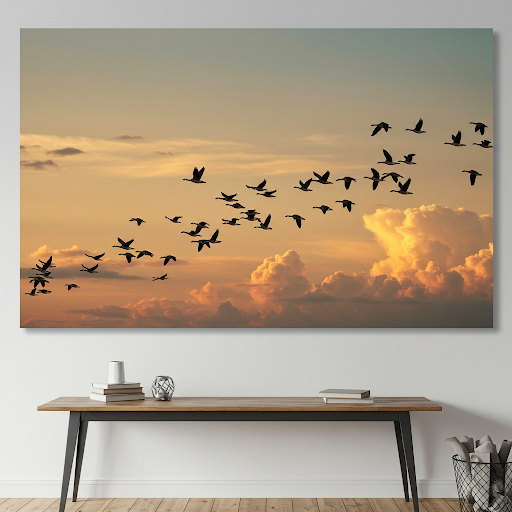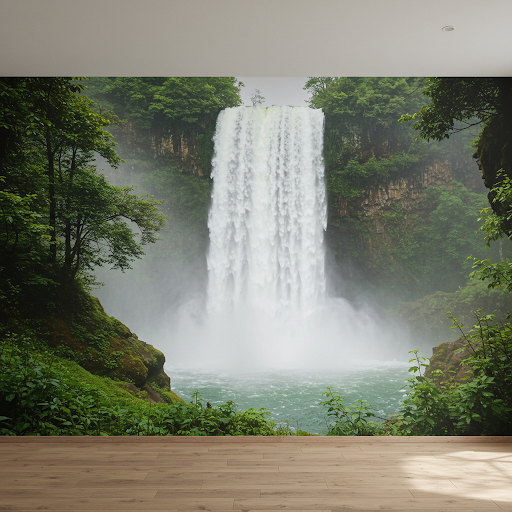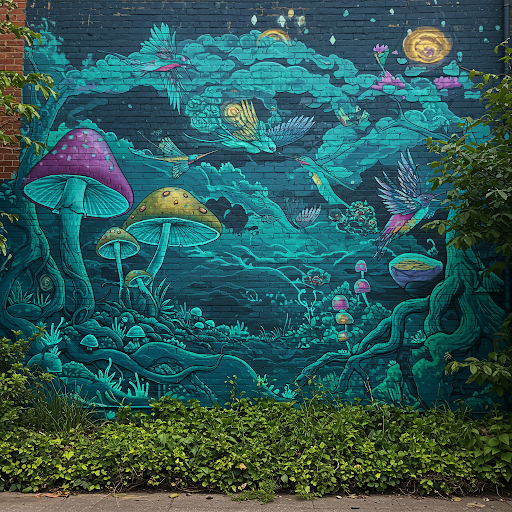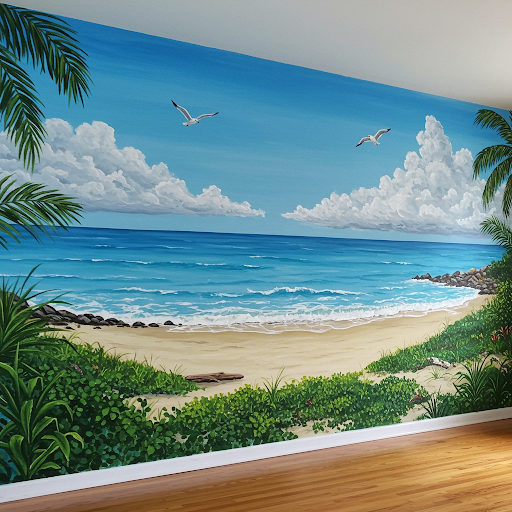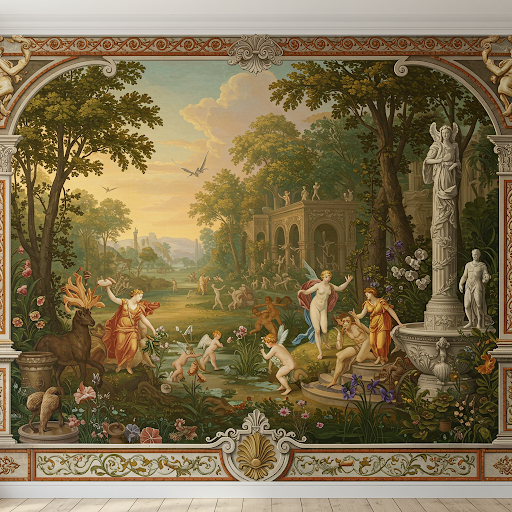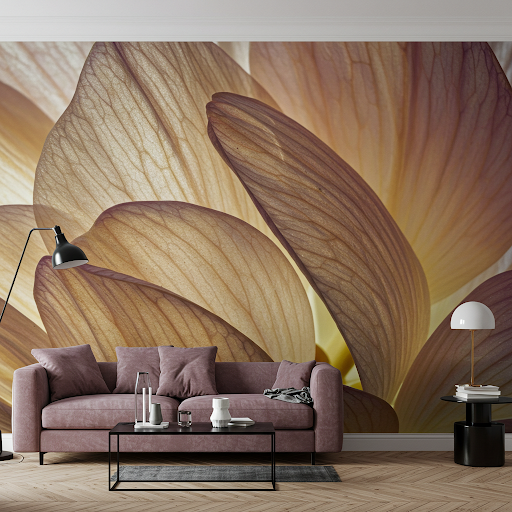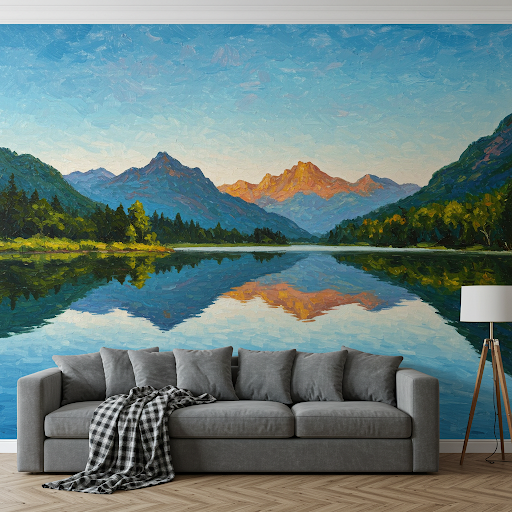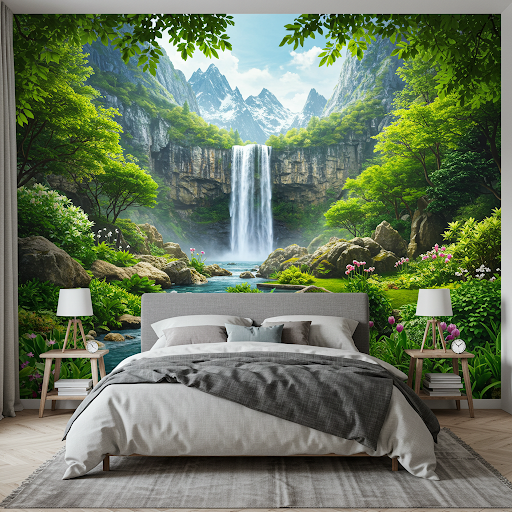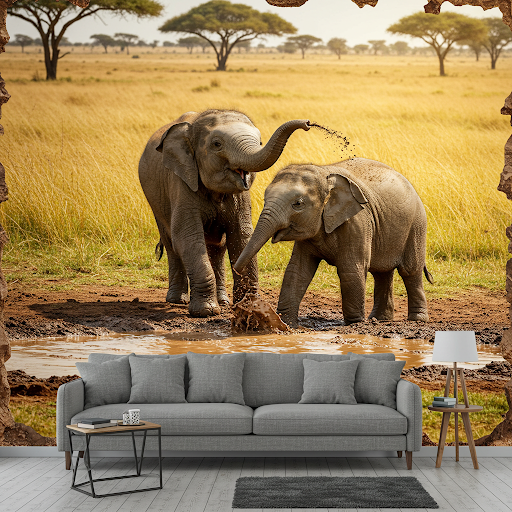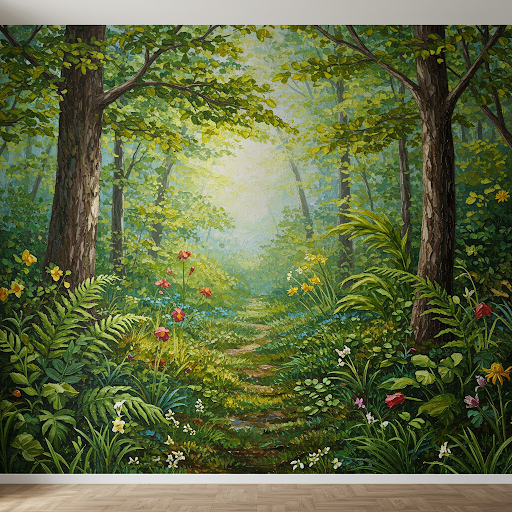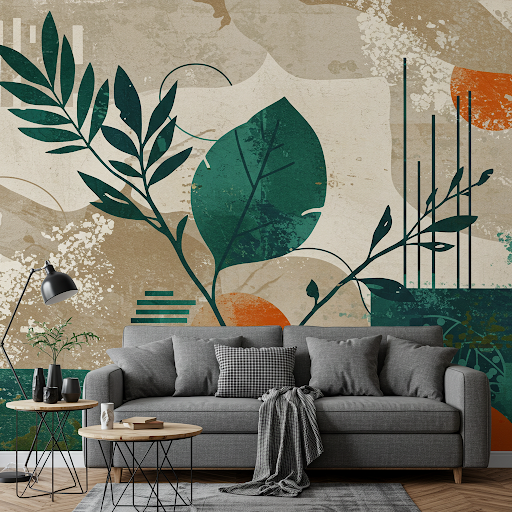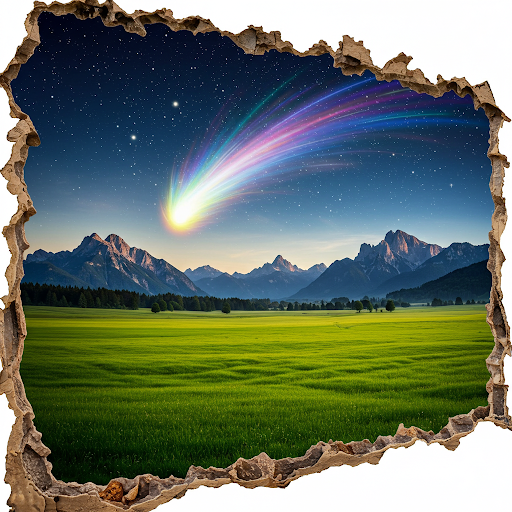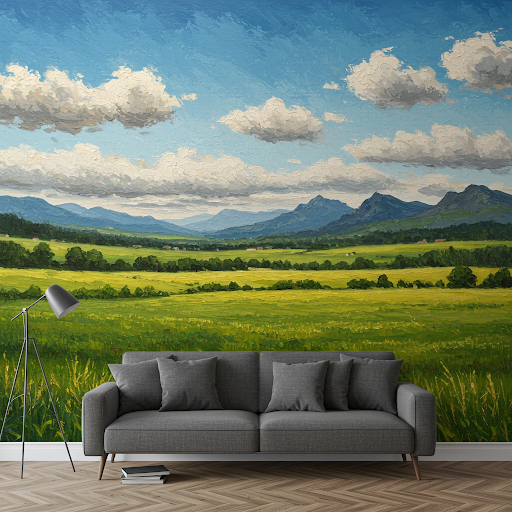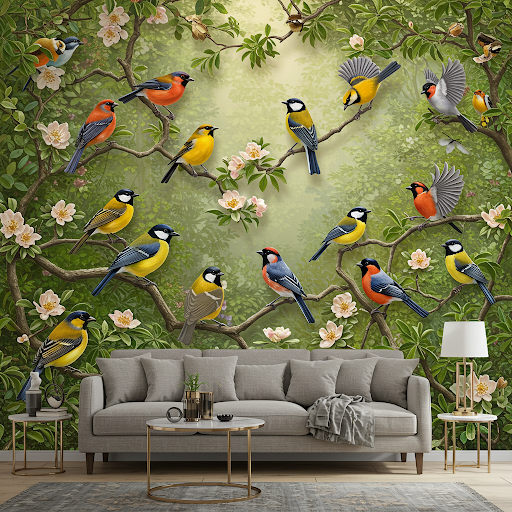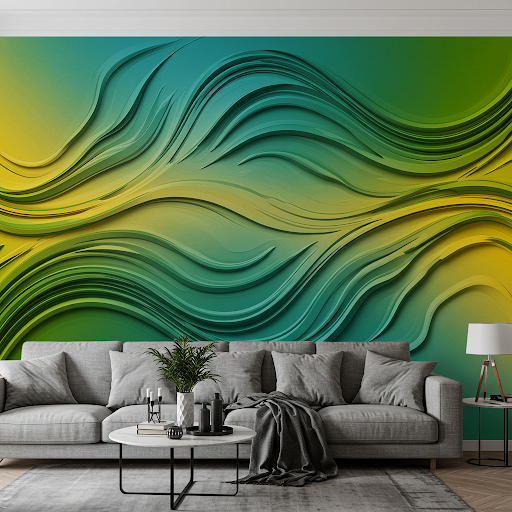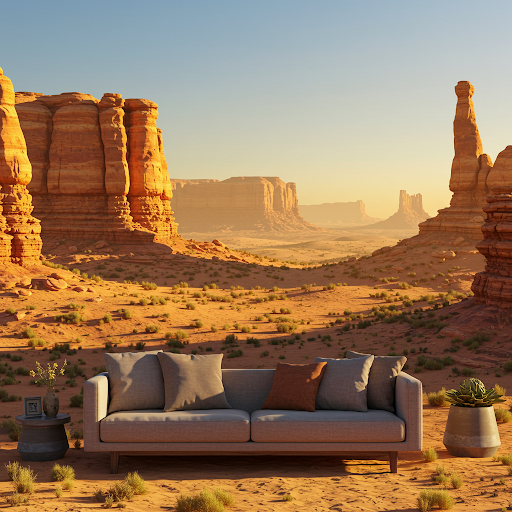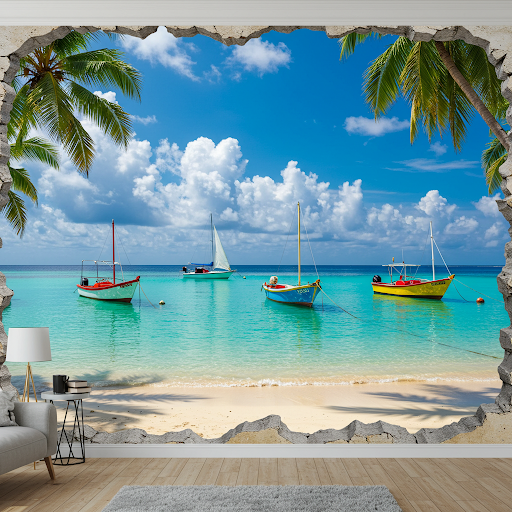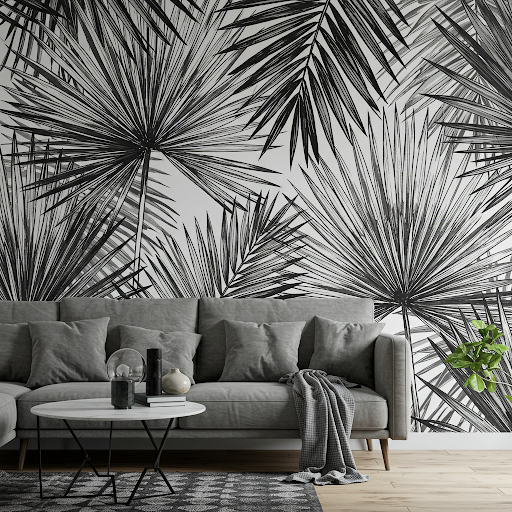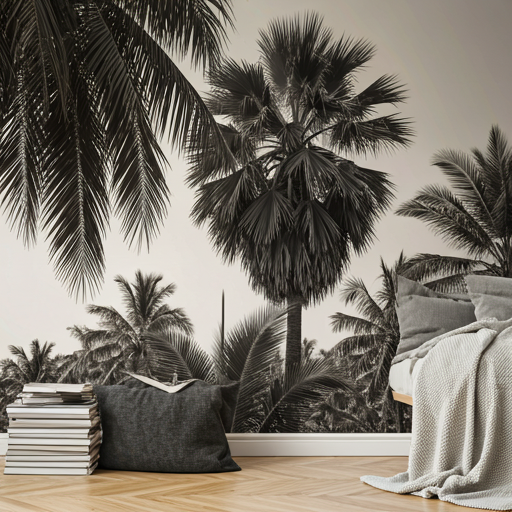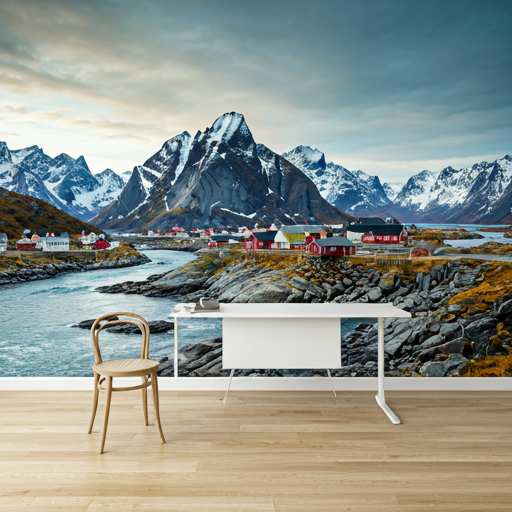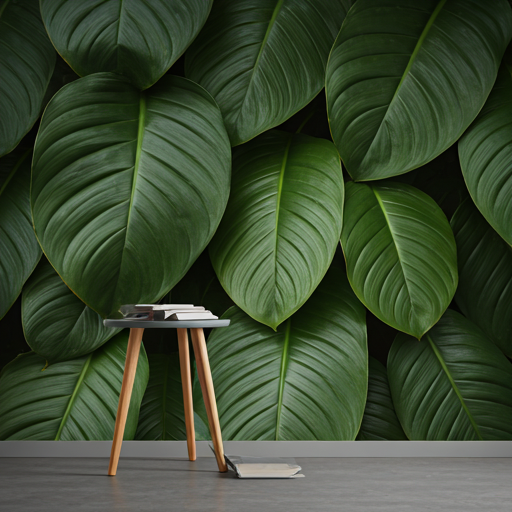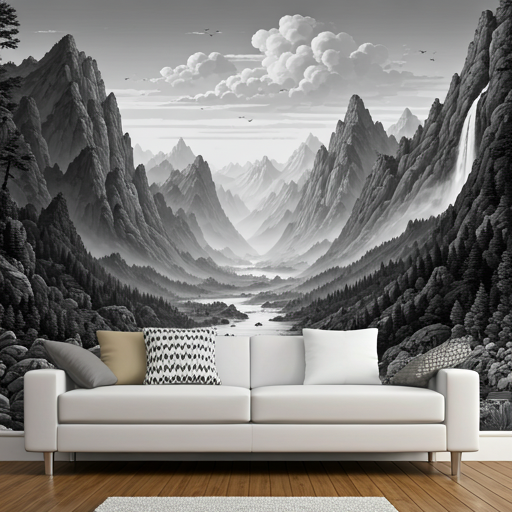Description
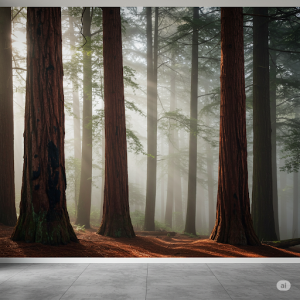
Today, nature mural painting techniques are diverse. And blend traditional hand-painted methods with cutting-edge digital approaches. The choice between them often depends on the desired aesthetic, budget, timeline, and the specific application.
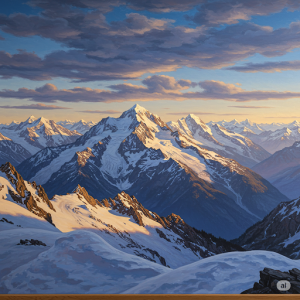
Modern digital custom-made nature mural painting typically can replicate intricate details and textures from a source image with high fidelity, offering a crisp, almost seamless look.
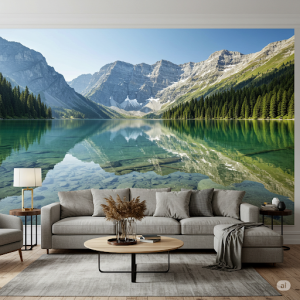
Often, you can not tell the difference between a traditional hand-painted nature mural and a modern custom print wallpaper in artisanal quality. You’ll often see visible brushstrokes, subtle variations in color density, and layered textures that create an almost tangible depth. While they can achieve incredible realism, it’s often a “painterly” realism, imbued with the artist’s unique style and subtle imperfections that give it warmth and authenticity.
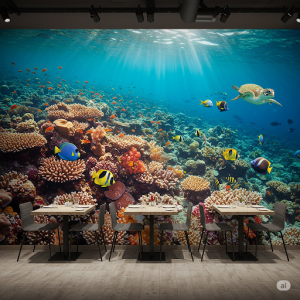
Nature mural painting boasts a rich and continuous history. It has evolved from rudimentary applications in prehistoric caves to the sophisticated digital creations of today. This journey reflects humanity’s enduring fascination with the natural world. And the ever-changing tools and techniques available to artists.
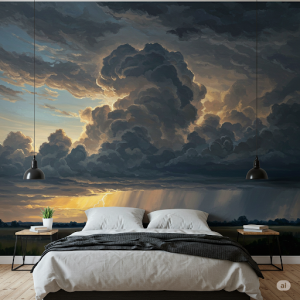
Wallpaper Imitations of Earlier Forms of Nature Murals
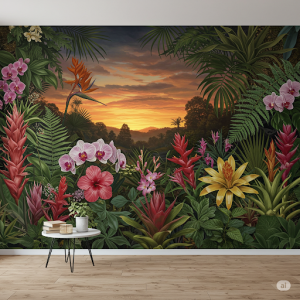
Ancient Techniques: Capturing Nature’s Essence
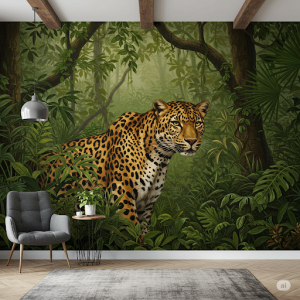
The earliest forms of nature mural painting are found in prehistoric cave paintings. They date back over 40,000 years. These masterpieces, like those in Lascaux (France) or Sulawesi (Indonesia), depict animals and their environment using natural pigments such as charcoal, ochre, hematite, and clay. Techniques included finger tracing, stenciling, and applying pigments with rudimentary brushes. Or by blowing them through hollow bones. These murals often served a ritualistic or communicative purpose. And reflect a deep connection to survival and the natural world.

In Ancient Egypt, murals adorned tomb walls and temples. And often depict scenes of daily life, agricultural abundance, and symbolic representations of the natural world. While heavily stylized and symbolic, these murals featured flora and fauna like lotus blossoms, fish, and birds in aquatic settings. Pigments were derived from minerals and earth. And were applied using tempera techniques, where pigments were mixed with a binder like egg yolk or animal glue.
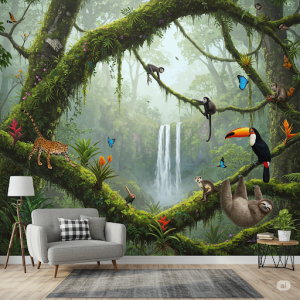
Roman murals, particularly those unearthed from Pompeii and Herculaneum, show a remarkable development in depicting landscapes. Artists like Studius are credited with pioneering “that most delightful technique of painting walls with representations of villas, porticos and landscape gardens, woods, groves, hills, pools, channels, rivers, and coastlines.” Roman painters utilized fresco techniques (buon fresco on wet plaster or a secco on dry plaster), employing vibrant mineral pigments. Their works often exhibited an almost “impressionistic” brushwork and bird’s-eye perspectives. And created illusionistic scenes that expanded the perceived space of a room.
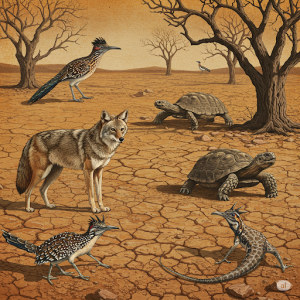
Medieval and Renaissance Eras: Nature as Symbol and Setting
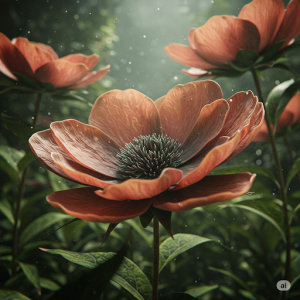 During the Middle Ages, nature in murals often served as a symbolic backdrop for religious narratives. Landscapes were included in illuminated manuscripts and altar paintings, providing context for biblical events rather than being celebrated for their own sake. While less focused on naturalistic representation, artists like Hieronymus Bosch incorporated intricate and fantastical landscapes rich in symbolism.
During the Middle Ages, nature in murals often served as a symbolic backdrop for religious narratives. Landscapes were included in illuminated manuscripts and altar paintings, providing context for biblical events rather than being celebrated for their own sake. While less focused on naturalistic representation, artists like Hieronymus Bosch incorporated intricate and fantastical landscapes rich in symbolism.
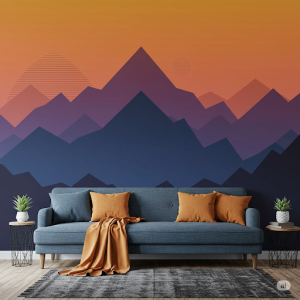
The Renaissance marked a significant shift, as nature began to be seen as a reflection of the divine and a subject worthy of independent artistic exploration. Artists like Leonardo da Vinci made detailed studies of natural phenomena, and Albrecht Dürer produced meticulously observed engravings of plant life. While full-scale independent landscape murals were less common than religious or mythological scenes, elements of nature became increasingly prominent and realistic within larger compositions, often in fresco. Gardens and idealized natural settings frequently symbolized paradise or provided contemplative spaces.
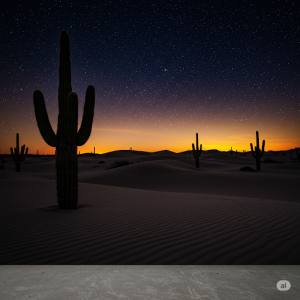
From Romanticism to Impressionism: Capturing Emotion and Light
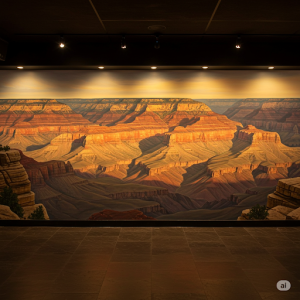
The Romantic era in the 18th and 19th centuries saw a powerful emphasis on the sublime and emotional aspects of nature. While not always directly translating to murals, the focus was on dramatic landscapes, wild natural forces, and the individual’s emotional connection to nature. This is as seen in the works of artists like Caspar David Friedrich and J.M.W. Turner, which influenced the perception of nature as a powerful and awe-inspiring subject. When nature was depicted on a larger scale, it aimed to evoke strong feelings and a sense of wonder.
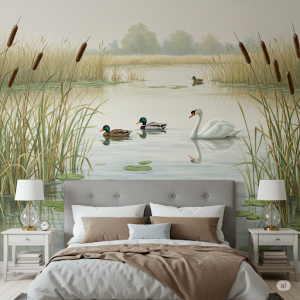
Impressionism, emerging in the late 19th century, revolutionized the depiction of light and atmosphere. Artists like Claude Monet, known for his “Water Lilies” series, focused on capturing the fleeting “impression” of a scene rather than a perfectly rendered reality. While less common than large-scale murals in their original form, the principles of Impressionism – vibrant colors, visible brushstrokes, and a focus on natural light – laid the groundwork for how nature would be depicted in broader, more atmospheric contexts, including some later wall decorations.
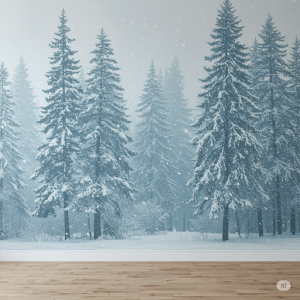
The 20th Century and Beyond: Diversity and Public Art
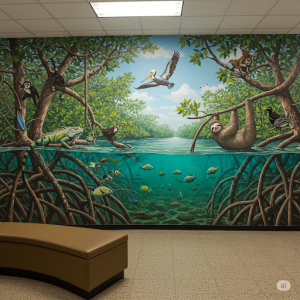
The 20th century witnessed a diversification of mural styles and techniques. Mexican muralism, led by artists like Diego Rivera, José Clemente Orozco, and David Alfaro Siqueiros, used public murals to reflect national identity and social issues. While often focusing on historical and political themes, nature sometimes played a role, usually as a backdrop or symbol of national resources and landscape.
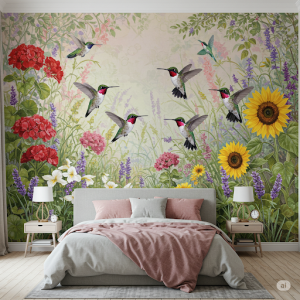
Throughout the 20th century, various art movements influenced mural painting, including Expressionism, Cubism, and Surrealism. And sometimes incorporate distorted or symbolic representations of nature. The rise of public art projects and the use of new materials expanded the possibilities for murals.
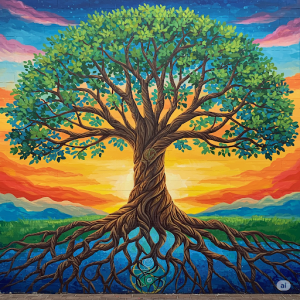
In the late 20th and early 21st centuries, mural painting embraced a wide range of approaches, including:
Street Art and Graffiti
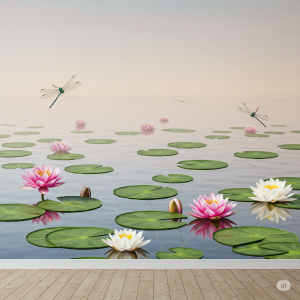
While often urban-focused, many street artists incorporate natural elements, flora, and fauna into their large-scale works using spray paint and stencils. This form of muralism often engages with social or environmental themes.
Environmental Art
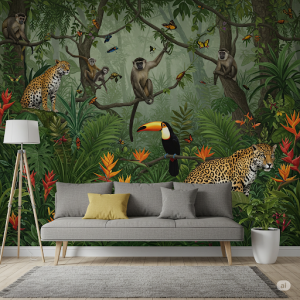
This movement often involves site-specific installations that directly interact with nature. Sometimes incorporating elements of mural painting on natural or man-made surfaces within a landscape.
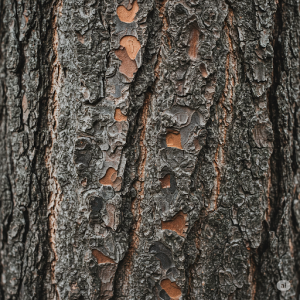
Trompe l’oeil
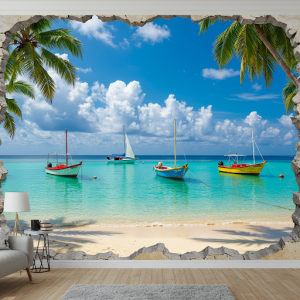
The Trompe l’oeil technique, which creates the illusion of three-dimensionality, continues to be used in nature murals to transform flat surfaces into seemingly real and profound natural scenes, often in public spaces.
Digital Nature Mural Painting: A New Frontier
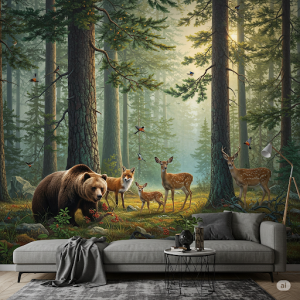
The digital art scene in Kenya is blossoming. And a fascinating trend is emerging. Artists are using digital tools to create stunning nature-inspired paintings. This blend of technology and the natural world resonates deeply in a country known for its breathtaking landscapes and diverse wildlife.
What is Digital Nature Mural Painting?
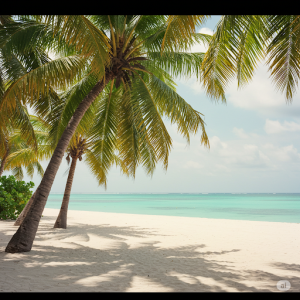
Digital mural nature art involves using software and hardware, like tablets and styluses, to create artwork that mimics traditional painting techniques but with a digital twist. Kenyan artists are employing these tools to depict everything from the vast plains of the Maasai Mara teeming with wildlife to the intricate details of indigenous flora. The results are often vibrant, evocative pieces that capture the essence of Kenya’s natural beauty.
Why is it Popular in Kenya?
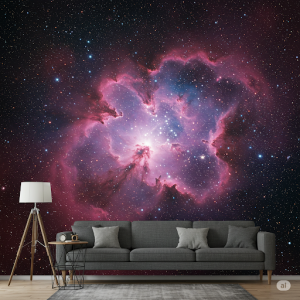
Several factors contribute to the popularity of this art form in Kenya:
Appreciation for Nature

Kenyans have a deep connection to their natural heritage. Digital nature mural painting allows artists to express this appreciation in a contemporary way, reaching a wider audience.
Accessibility of Digital Tools
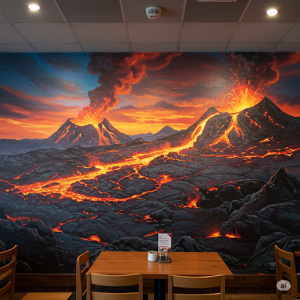
As technology becomes more accessible, more artists can explore digital mediums. This lowers the barrier to entry compared to traditional painting, which can require more expensive materials.
Global Reach
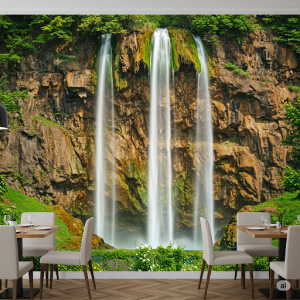
Digital art can be easily shared online, allowing Kenyan artists to showcase their work to a global audience and connect with international art communities.
Fresh Perspective
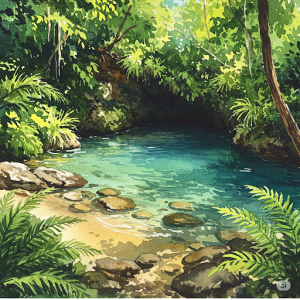
Digital tools offer unique possibilities for artistic expression, allowing for experimentation with color, texture, and effects in ways that traditional mediums might not. This can lead to fresh and exciting interpretations of familiar landscapes.
Local Artists Leading the Way
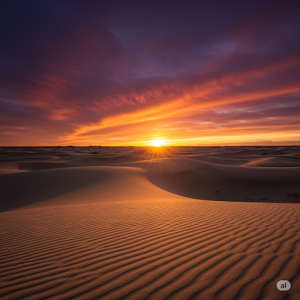
Several Kenyan digital artists are gaining recognition for their nature-inspired works. Their pieces often feature iconic Kenyan animals like lions, elephants, and giraffes, set against the backdrop of the country’s diverse ecosystems. These artists are not only creating beautiful art but also raising awareness about conservation and the importance of preserving Kenya’s natural heritage. Through their digital canvases, they invite viewers to experience the beauty and fragility of the Kenyan wilderness.
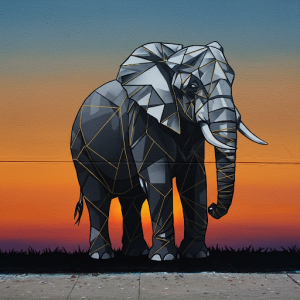
The Future of Digital Nature Mural Painting in Kenya
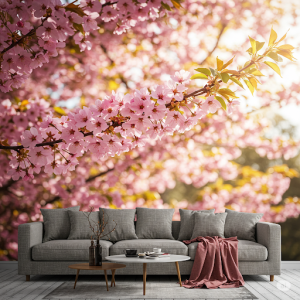
The future looks bright for digital nature mural painting in Kenya. As technology continues to evolve and more artists embrace digital tools, we can expect to see even more innovative and captivating artwork. This art form has the potential to enrich Kenya’s artistic landscape. And play a significant role in promoting environmental awareness and appreciation for the country’s unique natural heritage on a global stage. The digital brush is proving to be a powerful tool in the hands of Kenyan artists, allowing them to paint a vibrant future for nature-inspired art.
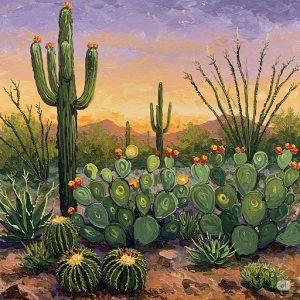
The advent of digital technology has introduced a completely new dimension to nature mural painting. Digital nature murals can be created through Large-format printing, hand-painting. High-resolution photographs or digitally painted nature scenes can be printed on various materials (vinyl, canvas, wallpaper) and then applied to walls. This allows for incredibly realistic and immersive nature scenes, from vast landscapes to detailed close-ups of flora and fauna, without the limitations of traditional wallpaper or murals. These “canvas murals” offer several advantages:
Realism and Depth
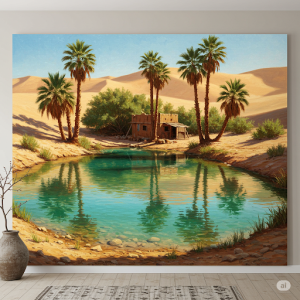
Unlike flat wallpaper, the texture of the canvas can add a subtle depth that enhances the illusion of a real scene. High-resolution printing ensures incredible detail, making it feel like you’re looking out a window or into a new space.
Customization
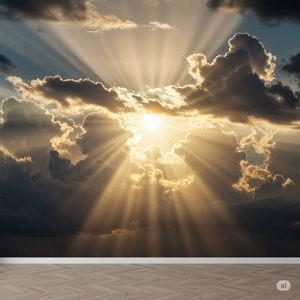
Artists and photographers can create bespoke scenes tailored to a specific room’s dimensions, color scheme, or desired mood. This allows for truly unique and personalized wall art.
Durability and Washability
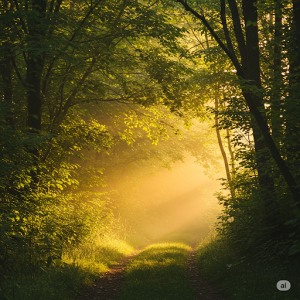
Printed canvases are often more durable and easier to clean than traditional wallpaper, making them suitable for high-traffic areas or even bathrooms (with proper sealing).
Ease of Installation (and Removal)
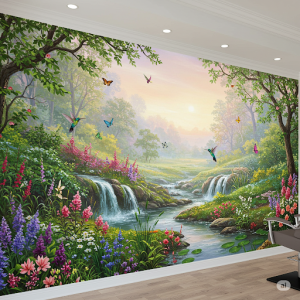
While professional installation might be recommended for large pieces, many canvas murals are designed for relatively straightforward application, similar to hanging heavy wallpaper. Some systems even allow for easier removal than traditional wallpaper, which can be a significant benefit for renters or those who like to change their decor frequently.
Impact
A well-chosen and expertly installed canvas mural can transform a room, creating a sense of expansiveness, tranquility, or drama, depending on the scene. It can become a focal point and a conversation starter.
Applications
Homes
Living rooms, bedrooms, dining rooms, home offices, and even bathrooms can be dramatically enhanced. Imagine a forest scene in a bedroom for a calming effect, or a vibrant cityscape in a living room for an energetic feel.
Commercial Spaces
Hotels, restaurants, spas, healthcare facilities, and corporate offices can use these murals to create a specific ambiance, enhance branding, or provide a calming environment for clients and employees.
Themed Rooms
Perfect for children’s rooms (jungle, space, underwater themes), or for creating immersive experiences in entertainment venues.
This technology represents a significant step forward in interior design, offering a powerful and flexible way to bring the beauty and inspiration of the natural world directly into built environments.
AI-generated nature mural painting
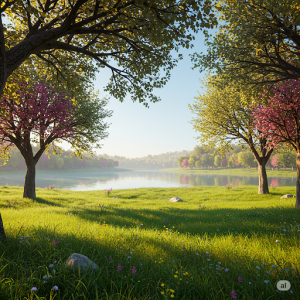
With the rise of artificial intelligence, algorithms can now generate highly realistic or fantastical nature scenes, which can then be used as source material for digital murals.
While hand-painted murals continue to thrive, digital techniques offer unparalleled flexibility in terms of scale, detail, reproduction, and dynamic presentation, making nature mural painting more accessible and versatile than ever before. From ancient caves to virtual landscapes, the human desire to bring the beauty and power of nature into our built environments remains a driving force in art.
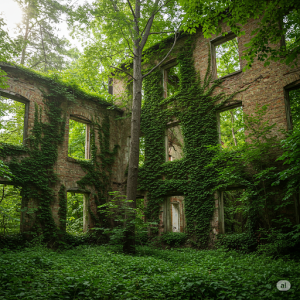
The Impact of AI on Nature Mural Creation
The ability for algorithms to generate highly realistic or fantastical nature scenes dramatically expands the possibilities for digital murals. Imagine:
Limitless Inspiration
AI can conjure landscapes that don’t exist, hyper-realistic botanical studies from impossible angles, or even abstract interpretations of natural phenomena. This moves beyond traditional reference photos and human imagination alone.
Rapid Prototyping
Designers can quickly generate multiple variations of a nature theme, exploring different moods, color palettes, or compositions in mere moments. This speeds up the ideation and client approval process significantly.
Customization on Demand
Want a mural of a rainforest that subtly transitions into a desert scene? AI can blend these concepts seamlessly, offering highly customized visuals tailored to specific interior design needs or brand aesthetics.
Accessibility for Non-Artists
While true artistic vision remains crucial, AI tools can empower individuals without traditional painting skills to create impressive visual backdrops for their spaces.
The Enduring Value of Traditional Art
Despite the advancements in digital techniques, the human desire for the tangible and unique ensures that hand-painted murals will continue to thrive. They offer:
Authenticity and Soul
A hand-painted mural carries the unique “fingerprint” of the artist. The visible brushstrokes, subtle imperfections, and the energy of creation. This imbues the space with a warmth and character that digital prints, however flawless, often can’t replicate.
Tactile Experience
There’s a subtle, almost subconscious appreciation for the texture and depth created by physical paint layers that a flat print cannot provide.
Site-Specificity
Artists can adapt their work organically to the architectural nuances of a wall. And incorporate existing features or irregularities into the design, making the mural truly belong to that specific space.
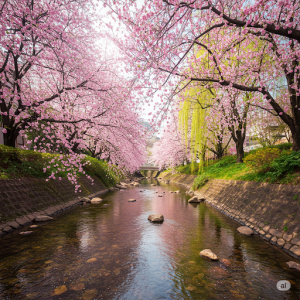
In essence, digital methods provide unparalleled flexibility and access. But the deep-seated human desire to connect with art created by another human hand ensures that both traditional and cutting-edge nature mural painting techniques will continue to beautify our environments for generations to come.

